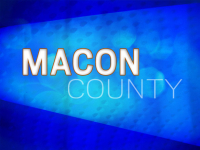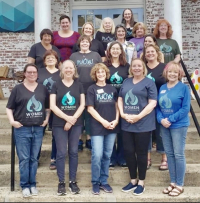Let’s go surfin’ now …
 In a surfing genre memoir complete with a SurferMagazine, globe-trotting storyline, all set to a 1960s rock & roll soundtrack, and with genuine literary flair, William Finnegan’s Barbarian Days is a one-of-a-kind, stand-alone achievement in terms of surf lore. Mirroring the tradition of the expression “a writer’s writer,” Finnegan is “a surfer’s surfer.” So, all you surf bums, big wave riders and belly-board wannabees, this is the book for you.
In a surfing genre memoir complete with a SurferMagazine, globe-trotting storyline, all set to a 1960s rock & roll soundtrack, and with genuine literary flair, William Finnegan’s Barbarian Days is a one-of-a-kind, stand-alone achievement in terms of surf lore. Mirroring the tradition of the expression “a writer’s writer,” Finnegan is “a surfer’s surfer.” So, all you surf bums, big wave riders and belly-board wannabees, this is the book for you.
William Finnegan started “bewitched by surfing as a kid — trotting dreamily down a path at dawn, lit by visions of trade-blown waves” during his high-school days in Honolulu, Hawaii (Diamond Head, Waikiki) and Newport Beach, California. A son of parents who were employed in the Hollywood film and television industry, he moved around a good bit — wherever his parents’ jobs took them — giving Finnegan the opportunity to grow up as a free-ranging, untethered teenager and to cut his surfing teeth on some of the best spots on the west coast and the Pacific.
But this was only the beginning. Coming of age amongst “hard-scrabble” indigenous Hawaiians and street-tough L.A. gangs, Finnegan developed a thick skin and a mean left-hook early on. He could hold his own in a street fight as well as on a hard-breaking wave. This early survivalist education and vagabond lifestyle would serve him well as he moved from his teens and into his twenties. With a copy of James Joyce’s Ulysses under one arm and a seven-foot surfboard in the other, Finnegan was both an insider and an outsider who seemed to fit in amongst the “in” surfing circles wherever he and his family ended up—whether in southern California or Hawaii. His memoir of those hallowed beginnings and what was to follow is littered with some of the most famous surfing spots in the world as well as the biggest names in competitive surfing. (“Legends of the trade who were celebrated like astronauts.”)
From the beginning in the late 1960s, Finnegan was a writer whose favorite authors included John Steinbeck, Dylan Thomas, Norman Mailer, William Carlos Williams and, of course, Jack Kerouac. From practically the beginning of the memoir, as a devoted scribbler he is writing what he refers to as a “railroad novel” that will continue to go through many versions and for many years. This passion and persistence will serve him well, as Barbarian Days is not only one of the most intelligent and detailed memoirs I’ve ever read, but one of the most engaging travel books that has fallen off the shelf and into my lap.
Finnegan’s quick-on-the-trigger yet disciplined voice and style ring out in this book’s pages. Not written for or about stereotypes or “surfer dudes,” the book describes the level of adventure mixed with descriptive passages on the science of wave breaks, wind currents and reef structure; of the physics and physical properties of the surf board and how to move around on that flat piece of foam and lacquer without falling. This is not only a crash course in itself, but something that could easily fit into an academic environmental science syllabus.
As Finnegan says on page 334: “All surfers are oceanographers, and in the area of breaking waves all are engaged in advanced research.” Even with all this built into his narrative, the storyline never bogs down, never wipes out, and is an action-packed pipeline into the inner sanctum of one of America’s most unknown and misunderstood subcultures. As he does throughout the book, he puts you right there with him — on the wave.
Related Items
I, like most people in our hierarchical consumer culture, always thought of surfers as stoned hipsters who lived on the dole and got a rush from being bashed around in the surf. Wrong! These guys are serious. Observant. Meticulous note-takers with logbooks of lists, “keeping a detailed record of every time we went out, recording where we surfed, the size of the waves, who our companions were (if any), any memorable events or observations, and data for year-to year comparisons.”
As Finnegan writes, “Surfing was not a ‘sport,’ it was a ‘path’” — sounding here a lot like some of the more sincere poets I have known. In fact, the nicknames of some of his friends and many of the surfing spots discussed and described in this book approximate the poetic. (Beeper Dave, Sloat Bill, Lurch, Lord Blears, The Lobbyist, The Bomb, Queen of the Coast, The Threes, Pipeline, The Barrel, Rhino Chaser, The Well).
After almost a decade of 1960s countercultural intoxication and ditching college for a “dream trip” to circumnavigate the globe seeking out the world’s best waves, Finnegan sets out with his good friend Bryan in 1978 for his “Endless Winter” — headed west to Polynesia where the waves get bigger and the writing gets better. He and Bryan improv their way westward into uncharted territory — scuttling across the globe working odd jobs (dishwasher, digging ditches, mopping floors) and fighting off a myriad of tropical diseases (malaria, dysentery, heatstroke) — to Samoa (Micronesia), to Tonga, to Fiji, to Australia, to Bali (Indonesia), to Java, to Sumatra, to Singapore, to Bangkok (Thailand), to Sri Lanka, to Cape Town (South Africa), to Johannesburg, to Zimbabwe, to Kenya and finally to Copenhagen, Moscow and New York — before arriving back on the west coast in San Francisco in 1983.
In San Francisco (“a place where there are no surfers”) he discovers the practically unknown treacherous wave breaks at Ocean Beach and the rare community of big wave riders who inhabit this “surf-story jukebox” as he calls it. Of this gnarly surf he writes: “The waves as they approached sounded like bowling balls rumbling down a lane, and then like the crashing of pins as they slammed into and rolled over your bowed head and shoulders, inducing instant ice-cream headache. Long, strain-filled minutes passed. The frisky, punishing waves came on and on. You tried to present the least possible resistance to the onrushing walls of whitewater, willing them past your body even as they snatched at you, sucking you backward.” Words in his surfing vocabulary to describe these years and the ferocity of the Ocean Beach waves include “amped” and “blown out.”
The rest of the book follows Finnegan as a free-lance writer and part-time surfer as the waves and the stakes get higher. As a successful freelancer, his writing takes an activist turn as he writes about the war in Nicaragua and about apartheid in South Africa for magazines like the New Yorker and Mother Jones.
The ending of the book covers the time period from 1994 to 2015 with Finnegan in permanent residence in New York City as an established war correspondent journalist, married and with a daughter. Although he continues to travel the world covering various wars and uprisings, he somehow finds time to discover other remote and astounding surfing spots — such as the island of Madeira (Portugal).
By 2015, feeling his age (in his 60s) and despising the global marketing phenomenon that surfing has become, he compares the selling of the idea of surfing with “surf schools for tourists.” Finnegan ends the book attempting to take stock and to define who and where he is. “Being half-poised to flee my desk and ditch engagements when the waves and wind and tide might conspire to produce something ridable. That crackling, fugitive patch is where I come from. And I just don’t want this to end.”
Different and maybe better than Kerouac’s On the Road (one of his favorite books), Finnegan’s “On the Ocean” is not unlike catching one of those illusive perfect waves and riding (reading) it to its natural end as it breaks perfectly into an island bay. His descriptions and word-paintings are unforgettable, locked in. So come on all you Hodads, goofy footers, goat boarders, gremmies and grey bellies, beach bums and bookaholics out there in lull land: surf’s up!
Thomas Crowe is the author of the award-winning autobiographical book of non-fiction Zoro’s Field: My Life in the Appalachian Woods (the land-locked contrapositive to a surfing memoir) and is a regular contributor to The Smoky Mountain News. He can be reached at This email address is being protected from spambots. You need JavaScript enabled to view it.









